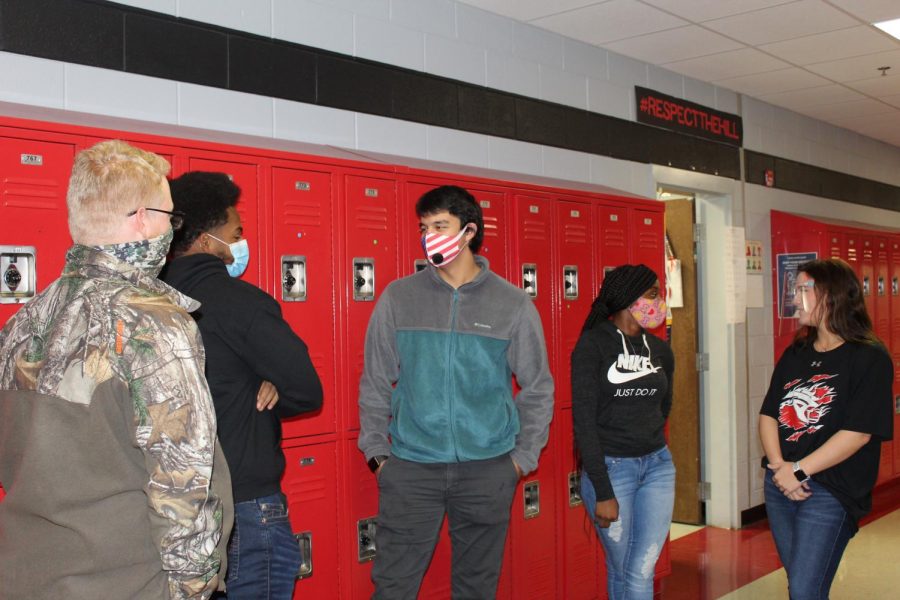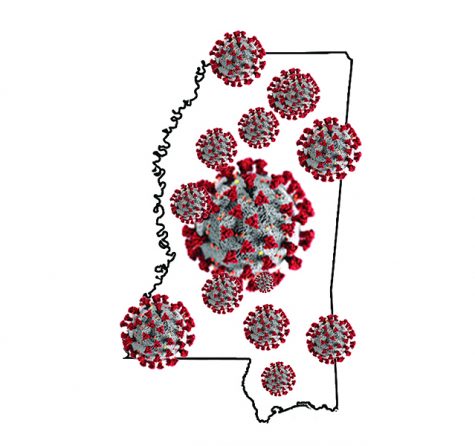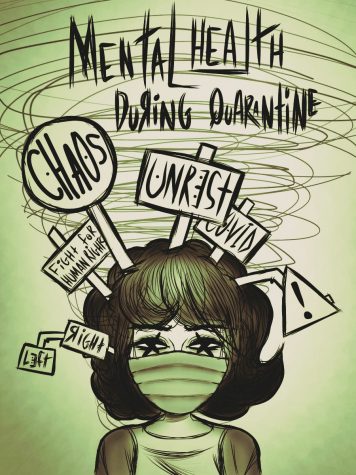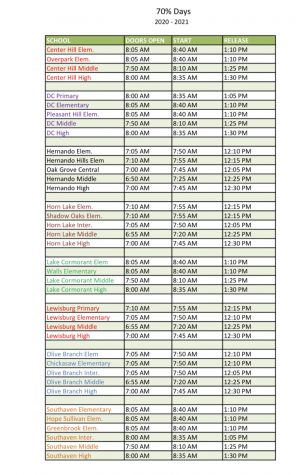With so many options, which type of face covering is best?
Students have many options for face coverings to protect themselves and others during the pandemic. From left, junior Nicholas Minott wears a neck gaiter, junior Lawrence Jones wears a surgical mask, junior Omar Almuntaser wears an N95 mask, sophomore Jamya Hassell wears a cloth mask, and sophomore Lorie Buckley wears a clear face shield.
Editor’s note: The Centers for Disease Control, which now says masks protect both the wearers and those around them from COVID-19, also recommends limiting close face-to-face contact with others. To practice social distancing, the CDC says to “stay at least 6 feet from other people who are not from your household in both indoor and outdoor spaces.” With guidance from the Mississippi State Department of Health, DeSoto County Schools’ policy states that “the exposure time to be considered a close contact to a case of Covid-19 is updated to less than 6 ft. for 15 minutes cumulative throughout the day.” The students in the group photo that accompanies this story do not have the coronavirus and were closer than 6 feet apart for less than 15 minutes.
It’s crazy to look back one year ago from now, reminiscing about the times when students never had to worry about social distancing, to remember to wear a face mask, or to keep hand sanitizer with them at all times. Not only do they have to worry about this these days, but they have to decide between the many options for face coverings and how we choose to protect ourselves. How are they supposed to know which ones to use?
As many already know, there is a large variety of face masks; there are standard surgical masks, cloth masks, masks with valves, and so many more.
Surgical masks “filter out large particles in the air and can make sure droplets from the wearer aren’t being spread,” according to Lisa Maragakis, author of “Coronavirus Face Masks and Protection FAQs.”
These masks are used by many healthcare workers and are recommended for everyone. They are meant to only be used once and cannot be washed. However, they give off the same effect as both a cloth mask and an N95 respirator (a mask with a valve).
Cloth masks are able to do the same things as a surgical mask, but they can be washed and reused. The CDC recommends cloth masks to have at least two layers of fabric, as the more layers make the mask more effective.
Although cloth masks do provide protection, surgical masks prove to be three times more effective, as mentioned in the article, “Which Masks Are Most Effective and Why?” by Katie Woehnker.
N95 respirators are able to filter at least 95% of airborne particles, Woehnker writes, yet studies prove that surgical masks can provide the same amount of protection.
The CDC recommends that other masks besides these could be generally used, since these types aren’t necessarily needed for people other than healthcare workers. These masks may not provide complete protection, but they are more effective than bandannas or neck gaiters. Studies show that respiratory particles from a cough could still travel up to 3 feet while wearing those.
Many people have chosen to wear face shields.
In the article, “Face masks versus face shields – which one is better?” by Heather Jackson, she writes that, “If someone coughs 18 inches from you while you are wearing a face shield, the immediate exposure is reduced by 96%… If the person remains coughing and talking to you for 30 minutes, the face shield blocks 68% of the small air particle.”
In other words, face shields aren’t entirely effective when it comes to blocking airborne particles. Face masks seem to be the safest option; they fully cover our noses and mouths, whereas face shields leave more open space.
When considering the information on the wide variety of face coverings, the most effective ones seem to be surgical masks. These masks have proved to provide the most protection from respiration particles, and they are shown to be up to three times more effective than any other mask as long as you abide by the one-time use rule. Therefore, surgical masks may be the way to go to prevent the spread of COVID-19.

Ella McAlister (she/her)
Editor-in-Chief, The Pony Express.
“Aww, she's ugly.” — John Mulaney
Ella McAlister is a senior at CHHS and the Editor-in-Chief...

Lily Dawson (she/her)
Staff/Reporter
“There’s more than one way to skin a cat.” — Unknown
Lily Dawson, class of 2023, is a staff reporter for...















